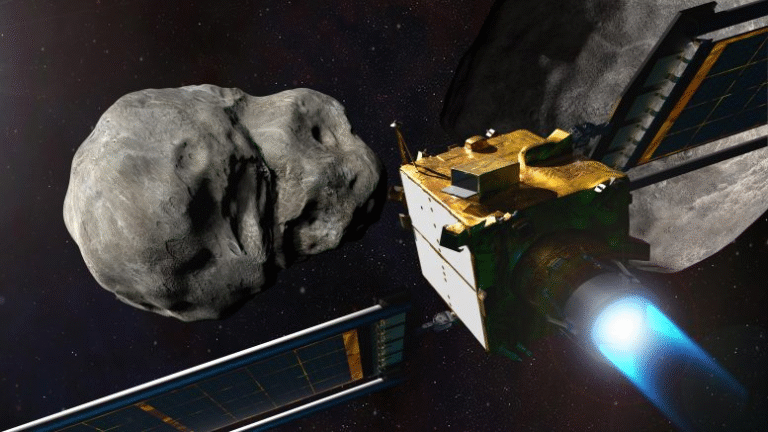NASA Confirms the Final Breakup of Iceberg A-23A — The End of a 40-Year Giant

One of the world’s most enduring and colossal icebergs, Iceberg A-23A, is finally coming apart after nearly four decades adrift. Once the largest iceberg on Earth, this Antarctic titan has now begun a dramatic collapse as it drifts into warmer waters of the Southern Ocean — a process NASA satellites have been closely watching.
The Birth of a Giant: 1986 and Beyond
Iceberg A-23A was born in 1986, when a massive slab of ice broke away from the Filchner–Ronne Ice Shelf, one of Antarctica’s largest floating ice shelves. At the time, A-23A was so large that it covered almost 4,000 square kilometers (about 1,540 square miles) — nearly the size of the U.S. state of Delaware. For decades, it remained grounded in the southern Weddell Sea, frozen to the ocean floor and unable to move freely.
This period of immobility lasted for more than 30 years, and many researchers had assumed that the iceberg would never move again. But in the early 2020s, something changed — A-23A lifted off the seabed and began drifting northward, pulled by ocean currents and wind patterns.
A Long, Slow Journey Northward
Once freed, A-23A embarked on a slow journey through the Weddell Sea, past the Antarctic Peninsula, and toward the South Atlantic Ocean. Its voyage wasn’t smooth. Over the years, the iceberg was repeatedly caught in ocean eddies and grounded on underwater ridges.
In March 2024, satellite images showed A-23A trapped in a rotating ocean vortex in the Drake Passage, one of the most turbulent stretches of water on Earth. By May 2025, it had lodged again — this time against the shallow coastal shelf south of South Georgia Island. For a time, it appeared that the iceberg might remain there indefinitely.
Then, in late May 2025, a shift in ocean currents dislodged the massive ice block once more, setting it adrift toward “iceberg alley”, the well-known path where Antarctic icebergs go to die. As it moved northward into warmer waters, the giant began to splinter apart, marking the beginning of its final chapter.
The Breakup Captured from Space
NASA’s Terra satellite captured the most striking image of A-23A’s disintegration on September 11, 2025, using its MODIS (Moderate Resolution Imaging Spectroradiometer) instrument. The image revealed a once-solid giant now fractured into multiple massive sections surrounded by countless smaller ice fragments.
At that point, the largest remaining piece of A-23A measured about 1,500 square kilometers (roughly 580 square miles), making it the second-largest iceberg still afloat on the planet at that time. However, the giant had already lost two-thirds of its original size since beginning its northward journey just a few years earlier.
The disintegration wasn’t limited to one main piece. Nearby, several other massive fragments were identified — each officially named and tracked by the U.S. National Ice Center (USNIC). The newly designated fragments included:
- Iceberg A-23G – approximately 324 square kilometers (125 square miles)
- Iceberg A-23I – approximately 344 square kilometers (133 square miles)
Each of these new icebergs met the criteria for official naming — they exceeded 20 square nautical miles (69 square kilometers) in area or stretched more than 10 nautical miles (19 kilometers) in length.
Satellite analysts Jan Lieser from the Australian Bureau of Meteorology and Christopher Shuman from the University of Maryland first spotted the fragmentation, later confirmed by Britney Fajardo of the U.S. National Ice Center using MODIS imagery.
The Iceberg’s Dangerous Offspring
While scientists can easily track large icebergs like A-23A and its named fragments from space, smaller breakaway chunks pose a greater challenge. As A-23A fractured, it released thousands of small- and medium-sized icebergs, many of which drift far from their source.
These fragments are invisible to ships’ radar under certain conditions and can be extremely dangerous for maritime traffic. Some of them drift into major shipping lanes in the South Atlantic, prompting ongoing monitoring by NASA, the U.S. National Ice Center, and other global agencies.
The Landsat satellites and synthetic aperture radar (SAR) systems are used to observe these smaller bergs. Unlike MODIS, SAR can “see” icebergs even during polar night or stormy weather, giving scientists a complete picture of iceberg behavior throughout the year.
How Iceberg A-23A Survived for So Long
One reason A-23A lasted so long is its sheer thickness — estimated to be over 400 meters (1,300 feet) in some areas. This massive volume meant that even after decades of melting, much of the iceberg remained intact.
When grounded in the cold Weddell Sea, it was sheltered from the warmer currents that melt most icebergs within years. Only when it floated free into the Southern Ocean did it begin to face relentless wave erosion, wind stress, and warmer water temperatures that gradually tore it apart.
Where A-23A Is Now
As of September 2025, A-23A and its fragments are drifting northward, just beyond South Georgia Island, into open ocean. NASA imagery shows that the iceberg continues to break apart, and scientists expect it to disintegrate completely by late 2025.
Each day, satellites capture new cracks and separations as the iceberg continues to erode. Experts say that the process may end with a spectacular collapse, creating a vast field of smaller icebergs that will eventually melt away completely.
The Scale of the Breakup
To put the scale of this event into context:
- August 17–19, 2025: MODIS imagery showed A-23A rotating and shedding massive edge fragments.
- August 18: The U.S. National Ice Center confirmed new fragments A-23G and A-23H, with A-23A centered around 53° 17′ S, 36° 51′ W and measuring roughly 33 × 30 nautical miles.
- August 21: A-23F was also confirmed as having split further.
- September 11: Fragment A-23I was documented at around 53° 00′ S, 36° 56′ W, while the main A-23A remnant was measured at 33 × 23 nautical miles.
- Earlier months in 2025 saw additional calving events — including A-23B, A-23D, and A-23E — confirming that the breakup had been progressing for months.
Why Scientists Care About This Iceberg
Although a melting iceberg doesn’t directly raise sea levels (since the ice is already floating), A-23A’s story offers valuable clues about climate change, ocean circulation, and ice shelf behavior.
Large icebergs act like floating laboratories. As they drift, they release freshwater, nutrients, and sediment into the ocean, subtly influencing marine ecosystems. When they melt near islands like South Georgia, they can temporarily change local salinity, nutrient flow, and even plankton growth, affecting everything from krill populations to seabird feeding patterns.
Moreover, the breakup of A-23A is symbolic of broader patterns being seen across the Antarctic. Warmer ocean currents and changing wind systems are causing ice shelves to thin and fracture more frequently, potentially leading to more large-scale calving events in the future.
The Global Iceberg Monitoring System
Tracking icebergs like A-23A requires a network of satellites, sensors, and international coordination. The U.S. National Ice Center (USNIC), based in Maryland, is responsible for cataloging and monitoring every Antarctic iceberg larger than 20 square nautical miles.
Satellites such as Terra, Aqua, and Landsat collect daily imagery, while synthetic aperture radar systems from ESA’s Sentinel-1 and Canada’s RADARSAT provide coverage when optical satellites can’t see due to cloud cover or darkness.
NASA’s Earth Observatory regularly publishes updates and imagery showing the evolution of these ice giants, helping researchers understand how Antarctic ice interacts with the global ocean system.
Why This Event Matters
The disintegration of A-23A isn’t just a dramatic natural spectacle — it’s a reminder of the planet’s changing climate system. This iceberg calved during an era when satellite monitoring was still in its infancy, and now, nearly 40 years later, its death is being recorded by some of the most advanced observational tools in human history.
The data from A-23A’s final years will help scientists model iceberg drift, melting rates, and environmental impacts more accurately. It’s also a crucial case study for understanding how Antarctic ice shelves might respond in coming decades if global temperatures continue to rise.
A Window Into Earth’s Ice Future
As A-23A continues to break apart, it joins a long list of Antarctic icebergs that have followed the same fate — floating north into warmer waters, fragmenting, and vanishing.
But few have lived as long or traveled as far. Its remarkable endurance makes A-23A a living timeline of Earth’s environmental changes over the past 40 years.
In just a few months, all that may remain will be scattered ice debris — a fleeting trace of what was once a frozen continent’s colossal ambassador to the sea.
Research Reference: NASA Earth Observatory – A Giant Iceberg’s Final Drift (September 2025)





